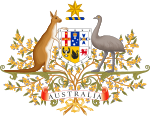
The politics of Australia takes place within the framework of a federal constitutional parliamentary democracy and constitutional monarchy. Australians elect parliamentarians to the federal Parliament of Australia, a bicameral body which incorporates elements of the fused executive inherited from the Westminster system, and a strong federalist senate, adopted from the United States Congress. Australia largely operates as a two-party system in which voting is compulsory.[1]
Contents
Legislative
The Parliament of Australia, also known as the Commonwealth Parliament or Federal Parliament, is the legislative branch of the government of Australia. It is bicameral, and has been influenced both by the Westminster system and United States federalism. Under Section 1 of the Constitution of Australia, Parliament consists of three components: the Monarch, the Senate, and the House of Representatives. The Australian Parliament is the world's sixth oldest continuous democracy.[2]The Australian House of Representatives has 150 members, each elected for a flexible term of office not exceeding three years,[3] to represent a single electoral division, commonly referred to as an electorate or seat. Voting within each electorate utilises the instant-runoff system of preferential voting, which has its origins in Australia. The party or coalition of parties which commands the confidence of a majority of members of the House of Representatives forms government.
The Australian Senate has 76 members. The six states return twelve senators each, and the two mainland territories return two senators each, elected through the single transferable voting system. Senators are elected for flexible terms not exceeding six years, with half of the senators contesting at each federal election. The Senate is afforded substantial powers by the Australian Constitution, significantly greater than those of Westminster upper houses such as those of the United Kingdom and Canada, and has the power to block legislation originating in the House as well as supply or monetary bills. As such, the Senate has the power to bring down the government, as occurred during the 1975 Australian constitutional crisis.
Because legislation must pass successfully through both houses to become law, it is possible for disagreements between the House of Representatives and the Senate to hold up the progress of government bills indefinitely. Such deadlocks are resolved under section 57 of the Constitution, under a procedure called a double dissolution election. Such elections are rare, not because the conditions for holding them are seldom met, but because they can pose a significant political risk to any government that chooses to call one. Of the six double dissolution elections that have been held since federation, half have resulted in the fall of a government. Only once, in 1974, has the full procedure for resolving a deadlock been followed, with a joint sitting of the two houses being held to deliberate upon the bills that had originally led to the deadlock.
Executive
Main articles: Government of Australia, Monarchy of Australia, Governor-General of Australia, Prime Minister of Australia, Cabinet of Australia, Federal Executive Council (Australia) and Australian head of state dispute
Government House, Canberra, also known as "Yarralumla", is the official residence of the Governor-General.
The Prime Minister of Australia is the highest government minister, leader of the Cabinet and head of government, holding office on commission from the Governor-General of Australia. The office of Prime Minister is, in practice, the most powerful political office in Australia. Despite being at the apex of executive government in the country, the office is not mentioned in the Constitution of Australia specifically and exists through an unwritten political convention. Barring exceptional circumstances, the prime minister is always the leader of the political party or coalition with majority support in the House of Representatives. The only case where a senator was appointed prime minister was that of John Gorton, who subsequently resigned his Senate position and was elected as a member of the House of Representatives (Senator George Pearce was acting prime minister for seven months in 1916 while Billy Hughes was overseas).[5]
The Cabinet of Australia is the council of senior ministers responsible to Parliament. The Cabinet is appointed by the Governor-General, on the advice of the Prime Minister and serves at the former's pleasure. The strictly private Cabinet meetings occur once a week to discuss vital issues and formulate policy. Outside of the cabinet there are a number of junior ministers, responsible for a specific policy area and reporting directly to any senior Cabinet minister. The Constitution of Australia does not recognise the Cabinet as a legal entity, and its decisions have no legal force. All members of the ministry are also members of the Executive Council, a body which is – in theory, though rarely in practice – chaired by the Governor-General, and which meets solely to endorse and give legal force to decisions already made by the Cabinet. For this reason, there is always a member of the ministry holding the title Vice-President of the Executive Council.
Reflecting the influence of the Westminster system, ministers are selected from elected members of Parliament.[6] All ministers are expected individually to defend collective government decisions. Individual ministers who cannot undertake the public defence of government actions are generally expected to resign. Such resignations are rare; and the rarity also of public disclosure of splits within cabinet reflects the seriousness with which internal party loyalty is regarded in Australian politics.
Judicial
Main articles: High Court of Australia and Australian court hierarchy
High Court building, view from the lake
The state supreme courts are also considered to be superior courts, those with unlimited jurisdiction to hear disputes and which are the pinnacle of the court hierarchy within their jurisdictions. They were created by means of the constitutions of their respective states or the Self Government Acts for the ACT and the Northern Territory. Appeals may be made from state supreme courts to the High Court of Australia.
Inferior Courts are secondary to Superior Courts. Their existence stems from legislation and they only have the power to decide on matters which Parliament has granted them. Decisions in inferior courts can be appealed to the Superior Court in that area, and then to the High Court of Australia.
Elections
Main articles: Australian electoral system and Divisions of the Australian House of Representatives
Julia Gillard, Prime Minister of Australia from 2010–2013 and the first female Prime Minister of the country.
The House of Representatives is elected using the Australian instant-runoff voting system, which results in the preferences which flow from minor party voters to the two major parties being significant in electoral outcomes. The Senate is elected using the single transferable voting system, which has resulted in a greater presence of minor parties in the Senate. For most of the last thirty years a balance of power has existed, whereby neither government nor opposition has had overall control of the Senate. This limitation to its power, has required governments to frequently seek the support of minor parties or independents to secure their legislative agenda. The ease with which minor parties can secure representation in the Senate compared to the House of Representatives has meant that these parties have often focused their efforts on securing representation in the upper house. This is true also at state level (only the two territories and Queensland are unicameral). Minor parties have only rarely been able to win seats in the House of Representatives.
State and local government
Main articles: Electoral systems of the Australian states and territories and Local government in Australia
States and Territories of Australia
Elections in the six Australian states and two territories are held at least once every four years, although Queensland holds them every three years. In New South Wales, Victoria, South Australia and the Australian Capital Territory, election dates are fixed by legislation. However, the other state premiers and the Chief Minister of the Northern Territory have the same discretion in calling elections as the Prime Minister at national level.
Local government in Australia is the third (and lowest) tier of government, administered by the states and territories which in turn are beneath the federal tier. Unlike the United States, United Kingdom and New Zealand, there is only one level of local government in all states, with no distinction such as counties and cities. Today, most local governments have equivalent powers within a state, and styles such as "shire" or "city" refer to the nature of the settlements they are based around.
Ideology in Australian politics
Sir Robert McKenzie of the Liberal party, Australia's longest-serving Prime Minister
Queensland in particular, along with Western Australia and the Northern Territory, are regarded as comparatively conservative.[9][10][11][12][13][14][15] Victoria, South Australia, Tasmania, and the Australian Capital Territory are regarded as comparatively left of centre.[15][16][17][18][19] New South Wales has often been regarded as a politically moderate bellwether state.[19][20]
Within the last 10 years, the Australian voting patterns of the Australian electorate have shifted. There is more volatility in the Australian electorate then ever before. More Australian voters are swinging between the two major parties or are voting for third parties, with one in four Australians voting for a minor party.
Political parties
Main article: List of political parties in Australia
Organised, national political parties have dominated Australia's
political landscape since federation. The late 19th century saw the rise
of the Australian Labor Party, which represented organised workers.
Opposing interests coalesced into two main parties: a centre-right party
with a base in business and the middle classes that has been
predominantly socially conservative, now the Liberal Party of Australia;
and a rural or agrarian conservative party, now the National Party of
Australia. While there are a small number of other political parties
that have achieved parliamentary representation, these main three
dominate organised politics everywhere in Australia and only on rare
occasions have any other parties or independent members of parliament
played any role at all in the formation or maintenance of governments.Australian politics operates as a two-party system, as a result of the permanent coalition between the Liberal Party and National Party. Internal party discipline has historically been tight, unlike the situation in other countries such as the United States. Australia's political system has not always been a two-party system, but nor has it always been as internally stable as in recent decades.[when?]
The Australian Labor Party (ALP) is a self-described social democratic party which has in recent decades[when?] pursued a liberal economic program. It was founded by the Australian labour movement and broadly represents the urban working class, although it increasingly has a base of sympathetic middle class support as well.
The Liberal Party of Australia is a party of the centre-right which broadly represents business, the suburban middle classes and many rural people. Its permanent coalition partner at national level is the National Party of Australia, formerly known as the Country Party, a conservative party which represents rural interests. These two parties are collectively known as the Coalition. In Queensland, the two parties have officially merged to form the Liberal National Party, and in the Northern Territory, the National Party is known as the Country Liberal Party.
Minor parties in Australian politics include a green party, the Australian Greens; a socially conservative party, the Family First Party and an anti-privatisation party, Katter's Australian Party. Formerly significant parties in recent decades have included the nationalist One Nation party and the socially liberal Australian Democrats.
Timeline
Since federation, there have been 29 Prime Ministers of Australia. The longest-serving Prime Minister was Sir Robert Menzies of the Liberal Party, who served for over 18 years from 1939–41, and again from 1949–66. The only other Prime Minister to serve for longer than a decade was John Howard, also of the Liberal Party, who led for more than 11 years from 1996–2007. The Coalition and its direct predecessors have governed at the federal level for a large majority of Australia's history since federation: 30,548 days as compared to Labor's 12,252 days.| Party | Prime Ministers | In Office |
|---|---|---|
| Liberal | 7 | 18,281 days |
| Labor | 12 | 12,252 days |
| Nationalist | 2 | 5,114 days |
| United Australia | 1 (2) | 3,508 days |
| Protectionist | 2 | 2,451 days |
| Commonwealth Liberal | 1 (2) | 783 days |
| Free Trade | 1 | 328 days |
| Country | 3 | 83 days |
| Total | 29 | 42,800 days |
 |
Historical electoral results
| Primary vote | TPP vote | Seats | |||||||||||||||||
|---|---|---|---|---|---|---|---|---|---|---|---|---|---|---|---|---|---|---|---|
| ALP | L+NP | Oth. | ALP | L+NP | ALP | L+NP | Oth. | Total | |||||||||||
| 7 Sep 2013 election | 33.4% | 45.6% | 21.1% | 46.6% | 53.5% | 55 | 90 | 5 | 150 | ||||||||||
| 21 Aug 2010 election | 38.0% | 43.3% | 18.8% | 50.1% | 49.9% | 72 | 72 | 6 | 150 | ||||||||||
| 24 Nov 2007 election | 43.4% | 42.1% | 14.5% | 52.7% | 47.3% | 83 | 65 | 2 | 150 | ||||||||||
| 9 Oct 2004 election | 37.6% | 46.7% | 15.7% | 47.3% | 52.7% | 60 | 87 | 3 | 150 | ||||||||||
| 10 Nov 2001 election | 37.8% | 43.0% | 19.2% | 49.0% | 51.0% | 65 | 82 | 3 | 150 | ||||||||||
| 3 Oct 1998 election | 40.1% | 39.5% | 20.4% | 51.0% | 49.0% | 67 | 80 | 1 | 148 | ||||||||||
| 2 Mar 1996 election | 38.7% | 47.3% | 14.0% | 46.4% | 53.6% | 49 | 94 | 5 | 148 | ||||||||||
| 13 Mar 1993 election | 44.9% | 44.3% | 10.7% | 51.4% | 48.6% | 80 | 65 | 2 | 147 | ||||||||||
| 24 Mar 1990 election | 39.4% | 43.5% | 17.1% | 49.9% | 50.1% | 78 | 69 | 1 | 148 | ||||||||||
| 11 Jul 1987 election | 45.8% | 46.1% | 8.1% | 50.8% | 49.2% | 86 | 62 | 0 | 148 | ||||||||||
| 1 Dec 1984 election | 47.6% | 45.0% | 7.4% | 51.8% | 48.2% | 82 | 66 | 0 | 148 | ||||||||||
| 5 Mar 1983 election | 49.5% | 43.6% | 6.9% | 53.2% | 46.8% | 75 | 50 | 0 | 125 | ||||||||||
| 18 Oct 1980 election | 45.2% | 46.3% | 8.5% | 49.6% | 50.4% | 51 | 74 | 0 | 125 | ||||||||||
| 10 Dec 1977 election | 39.7% | 48.1% | 12.2% | 45.4% | 54.6% | 38 | 86 | 0 | 124 | ||||||||||
| 13 Dec 1975 election | 42.8% | 53.1% | 4.1% | 44.3% | 55.7% | 36 | 91 | 0 | 127 | ||||||||||
| 18 May 1974 election | 49.3% | 44.9% | 5.8% | 51.7% | 48.3% | 66 | 61 | 0 | 127 | ||||||||||
| 2 Dec 1972 election | 49.6% | 41.5% | 8.9% | 52.7% | 47.3% | 67 | 58 | 0 | 125 | ||||||||||
| 25 Oct 1969 election | 47.0% | 43.3% | 9.7% | 50.2% | 49.8% | 59 | 66 | 0 | 125 | ||||||||||
| 26 Nov 1966 election | 40.0% | 50.0% | 10.0% | 43.1% | 56.9% | 41 | 82 | 1 | 124 | ||||||||||
| 30 Nov 1963 election | 45.5% | 46.0% | 8.5% | 47.4% | 52.6% | 50 | 72 | 0 | 122 | ||||||||||
| 9 Dec 1961 election | 47.9% | 42.1% | 10.0% | 50.5% | 49.5% | 60 | 62 | 0 | 122 | ||||||||||
| 22 Nov 1958 election | 42.8% | 46.6% | 10.6% | 45.9% | 54.1% | 45 | 77 | 0 | 122 | ||||||||||
| 10 Dec 1955 election | 44.6% | 47.6% | 7.8% | 45.8% | 54.2% | 47 | 75 | 0 | 122 | ||||||||||
| 29 May 1954 election | 50.0% | 46.8% | 3.2% | 50.7% | 49.3% | 57 | 64 | 0 | 121 | ||||||||||
| 28 Apr 1951 election | 47.6% | 50.3% | 2.1% | 49.3% | 50.7% | 52 | 69 | 0 | 121 | ||||||||||
| 10 Dec 1949 election | 46.0% | 50.3% | 3.7% | 49.0% | 51.0% | 47 | 74 | 0 | 121 | ||||||||||
| 28 Sep 1946 election | 49.7% | 39.3% | 11.0% | 54.1% | 45.9% | 43 | 26 | 5 | 74 | ||||||||||
| 21 Aug 1943 election | 49.9% | 23.0% | 27.1% | 58.2% | 41.8% | 49 | 19 | 6 | 74 | ||||||||||
| 21 Sep 1940 election | 40.2% | 43.9% | 15.9% | 50.3% | 49.7% | 32 | 36 | 6 | 74 | ||||||||||
| 23 Oct 1937 election | 43.2% | 49.3% | 7.5% | 49.4% | 50.6% | 29 | 44 | 2 | 74 | ||||||||||
| Polling conducted by Newspoll and published in The Australian. Three percent margin of error. | |||||||||||||||||||
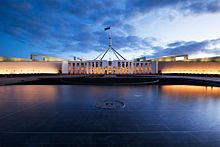
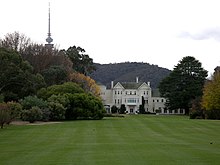
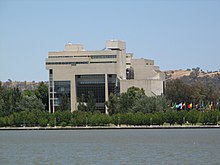
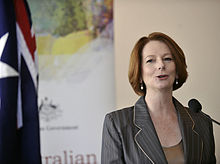



0 comments:
Post a Comment